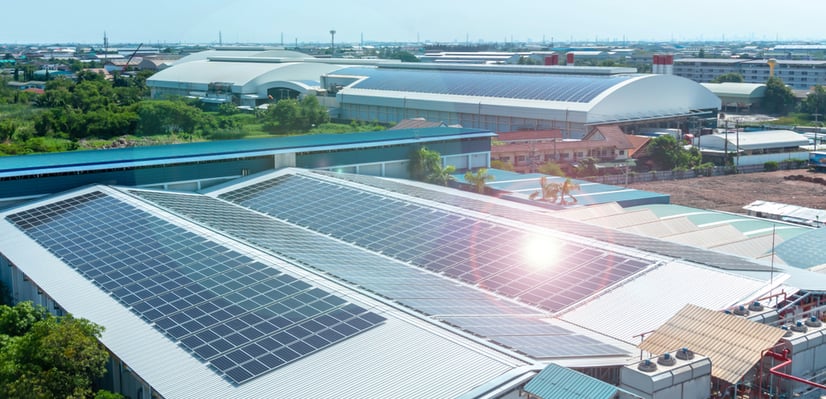How to Get the Federal Tax Credit for Solar Batteries

If you follow news about the energy industry, you have surely noticed the growing popularity of solar power. When used in utility-scale projects, solar panels can now produce cheaper electricity than coal power plants. Unfortunately, solar panels are unproductive at night, and their output is drastically reduced with cloudy weather. Fossil fuels don’t have this limitation, since power plants can burn them at any time.
Battery systems are an excellent complement for solar panels: they can store surplus electricity production, and supply that energy when there is no generation. Considering this opportunity, the federal tax credit for solar panels was amended to include batteries in 2018, and the tax credit extension from December 2020 also covers them. However, stand-alone batteries are not eligible, and they must get their charge from solar panels.
Are you considering solar panels with batteries? Get the 26% tax credit with a professional design.
Solar batteries are eligible for the federal tax credit in both residential and commercial installations. However, the eligibility requirements are slightly different in each case. Also, the batteries must be installed within a year after solar panels, or otherwise, they don’t have quality.
Federal Tax Credit for Residential Solar Battery Systems

If you plan to combine solar panels and batteries in a home installation, batteries only qualify for the 26% tax credit if they are fully charged with solar energy. In other words, you are not allowed to store electricity from the power grid.
Home solar systems in the US currently have an installed price of around $3,000 per kilowatt, before subtracting the federal tax credit and any other incentives available. This estimated cost is for a solar panel system without batteries, and it can vary depending on where you live.
Assuming you want to deploy an 8-kW solar array at home, the estimated cost is $24,000. To add a home battery like the Tesla Powerwall, you can expect an installed cost of around $12,000. When the two systems are combined, the total project cost is $36,000.
- If the home battery only stores electricity produced by the solar panels, the entire project is eligible for the 26% federal tax credit. In this case, you get $9,360.
- If the battery also stores electricity from the grid, only the solar power system gets the tax credit. In this case, the value is reduced to $6,240.
Not being able to charge solar batteries with grid electricity is a missed opportunity. Many grids have surplus generation in the hours after midnight, and this energy could be stored by home batteries. Then, when the power grid is struggling with peak demand, batteries can release their energy to alleviate the grid. In this example, you miss a tax credit of $3,120 if you charge the home battery with grid electricity.
Federal Tax Credit for Commercial Solar Battery Systems

In the commercial sector, there is more flexibility for solar battery systems. They can store electricity from the grid but must get at least 75% charge from solar panels to earn the federal tax credit. Companies that are billed time-of-use tariffs can take advantage of the lowest rates with a battery system, without missing the tax credit.
Commercial electricity consumers who deploy solar batteries must be aware of an important condition: only batteries that get 100% charge from solar panels get the entire federal tax credit, and the benefit is reduced based on the charging percentage (up to 75%). Any battery system designed to get more than 25% charge from the power grid is not eligible.
- The typical cost of a commercial solar system in the US is around $2,000 per kW, before subtracting tax benefits and other incentives.
- This means a 325-kW installation will cost around $650,000, and the 26% federal tax credit is $169,000.
- Also, since this is a commercial solar project, it benefits from a 5-year depreciation under the MACRS (Modified Accelerated Cost-Recovery System).
If this commercial solar array is combined with a 200-kWh battery that costs $160,000, the total project cost is $810,000 and the maximum tax credit available is $210,600. Of the total tax credit, $169,000 is for the solar array and $41,600 is for the battery system. However, the battery portion of the tax credit is reduced for storing grid electricity.
- If the battery system gets 85% of its charge from solar panels and 15% from the grid, 85% of the maximum tax credit is available - $35,360.
- The minimum charging percentage accepted is 75%, resulting in a tax credit of $31,200.
- Below this point, the battery system is not eligible, and only the $169,000 tax credit for solar panels can be claimed.
Energy consultants can model several charging scenarios between 75% and 100%, identifying the costs and savings in each case. Commercial electricity consumers are also billed for their peak demand, and batteries can be used to reduce the maximum demand measured, a concept known as peak shaving. Depending on the energy consumption profile of a building, storing off-peak electricity grid in batteries can make sense to trim peak demand as much as possible. This is viable if the extra savings compensate for not getting the complete tax credit.

Michael Tobias
Michael Tobias, the Founding Principal of NY Engineers, currently leads a team of 150+ MEP/FP engineers and has led over 4,000 projects in the US
Join 15,000+ Fellow Architects and Contractors
Get expert engineering tips straight to your inbox. Subscribe to the NY Engineers Blog below.

